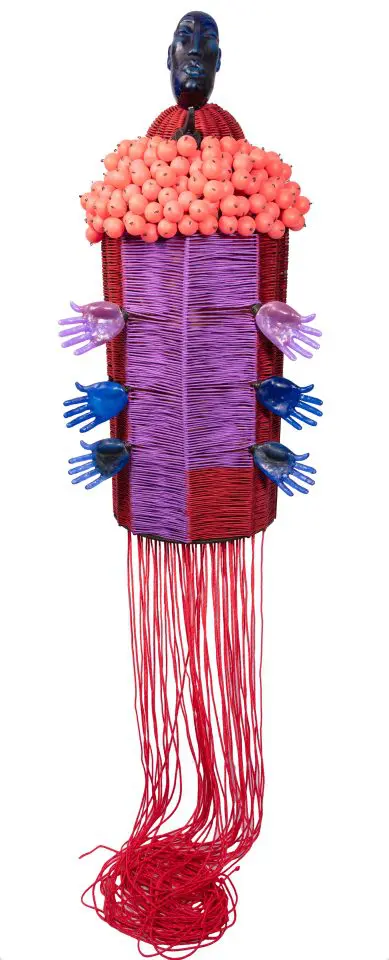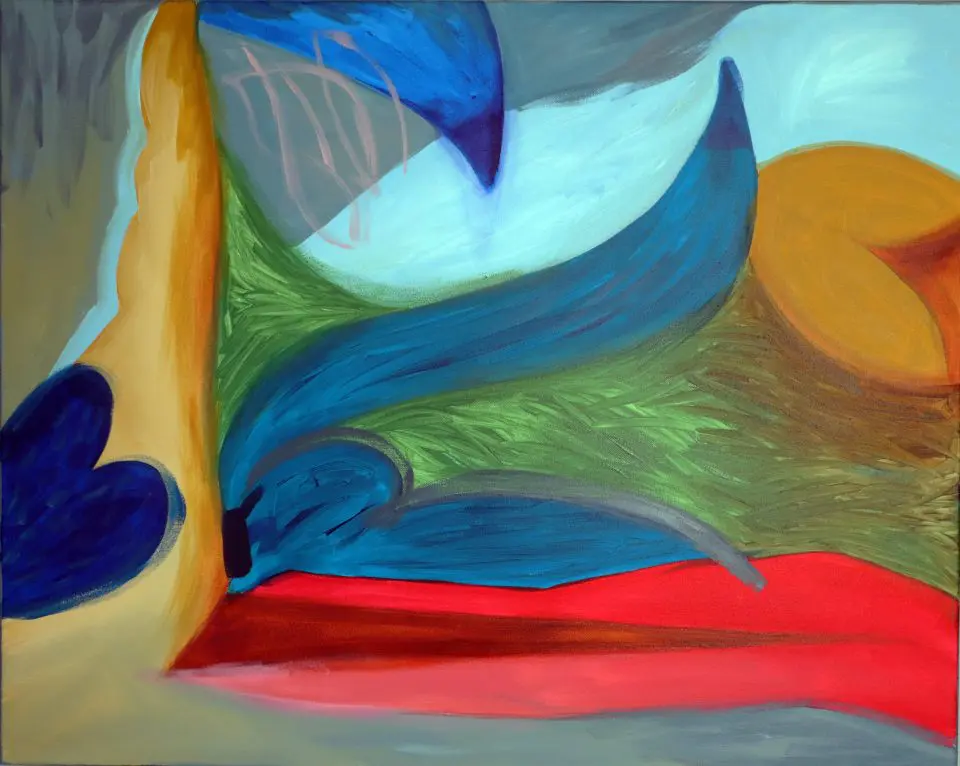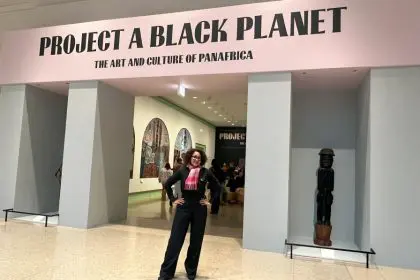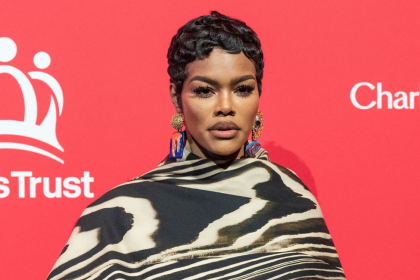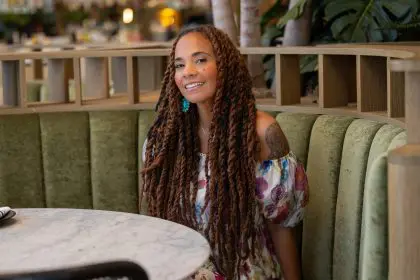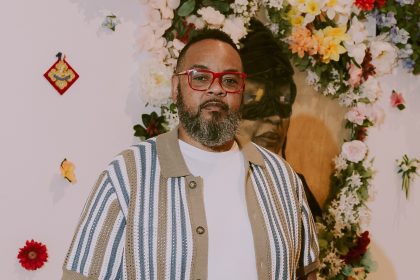
Grace Kisa, a Kenyan-born American artist based in Atlanta, brings a world of cultural experiences to her multidisciplinary artwork. Drawing from her childhood spent across Kenya, Ethiopia, Botswana, and the United States, Kisa’s sculptural pieces combine clay, metal, wood, fiber, and resin with a focus on recycling and repurposing ordinary objects. Her work examines intersectional identities, migration, and cultural exchange beyond borders, exploring themes of comfort, alienation, adaptation, and assimilation in our globalized world.
With over 25 years as a professional artist, Kisa’s impressive resume includes exhibiting with the European Cultural Centre during the 2024 Venice Biennale, serving as a keynote artist at the 2023 International Sculpture Conference, and having her collaborative public art commission purchased for the Atlanta Beltline’s permanent collection. Her work has been featured in The New York Times, Forbes, The Atlanta Journal and Constitution, ArtsAtl, Black Art In America, and Rolling Out.
As her new exhibition opens at the Emma Darnell Aviation Museum and Conference Center in Atlanta, Kisa sat down to discuss her artistic journey, cultural perspectives, and creative process.
How have your personal experiences shaped the way you create and present art today?
The experience of growing up among many different people in different cultures. We started traveling in the seventies. We left Kenya and moved to Ethiopia, went to an American curriculum, but it was an international school. Even in Kenya, starting out Nursery School was international. I’ve always lived in diverse communities, and we became very adaptable.
We learned a lot about different cultures, and so it gave us access to many different cultures. So then, in turn, we learn a language, a creoolized existence, where little things from all the places form our perception of the world.
You’ve often incorporated recycled and found materials in your work. How does that creative process help you maintain authenticity while connecting with your diverse viewers?
When I am looking for the found objects that I incorporate in my practice, where I will add resin, clay, fiber, hammer, nails, metal, and make them work to tell a story. So I start with finding the objects. Let them speak to each other, and then start building it out. I love using the different textures and colors, so it informs the story that I’m trying to tell.
What was one exhibition or project that truly tested your vision? How did you turn that challenge into an opportunity for innovation?
Last year I was invited by the European Cultural Center in Venice, Italy, to exhibit during their Venice Biennale. It was the 60th Venice Biennale last year, and it took me about a year and a half to prepare for it. Well, first they reached out to me and asked me if I would consider giving them a presentation of what I would do.
They had found me online and read about me, and so I did a presentation based on, I didn’t have to have the work done, but just concepts of what I was trying to do. What they asked was that I show an example of my practice.
Now, part of my practice is collaboration. I collaborated with a young artist here in Atlanta, called Ellex Swavoni and we did a sculpture for the Atlanta Beltline, which is a public walking project that’s supposed to connect 7 different areas in the Atlanta Metro area.
We had done 5 drawings of those for that project. So we picked one, that project was realized, and we still have the 4 other pieces. So I used that as the basis for my exhibition, and I wanted it to have those statues that are inspired by Egyptian cosmology.
So Horus, Osiris, Isis, Nephthys, I named them those, and so they’re supposed to represent the traditional archaeological African base of my work, and then the transmission is the found objects and sculpture that I bring in to have them communicate with each other. I had never done anything like this before. This was my first international exhibition.
They had hard deadlines, for when the photography is supposed to come in, when your statement comes in, it has to be international shipping standard. There were companies that I had to deal with, American shipping companies, packing shipping companies, there was an Italian shipping company. We had to coordinate the two companies carrying my work, coming to deliver, and so doing that, as well as still trying to be creative and create a strong body of work. Yes, it was challenging, but in the end I was very proud of that work. And some of those pieces, actually that exhibition I’m showing is part of this exhibition at the Emma Darnell Museum.
In your collaboration with Maurice Evans on Nu Africans, how did you preserve the core themes while exploring complex ideas like diaspora and identity?
Yes, because that’s the conversation that started this body of work. Maurice and I have known each other since we went to art school, and we used to work together. So we always have these conversations about the continental and the diasporic experience, learning about each other. When we would be talking, he said, “you know I don’t think of tribes or where people are from, but when I say black people, I think all people, all people who are black.”
And so I was like, well, I’m not black, which took him aback a little bit at first, because he was like, I don’t even understand what you mean, of course you are.
So what I explained to him was when I was at home growing up. I was just allowed to be a girl. It wasn’t a black girl or white, I was a Kenyan. I was also defined by my tribe, I have my own mother tongue. We have Swahili as our national language as well as English. There are 42 tribes, and we each have our own culture within that tribal group, so black never came into it. It was always, in Kenya, your tribe, or maybe your sex as well, girl or boy.
When I left and came to America, and really living in McLean, Virginia, because it was very diverse. So people were from all over the world, yes, they said black, but until they knew where you’re from. They’d be like, oh, those Kenyan girls, because we had a small black population in our school. So when they say the Kenyan girls, they meant the Kisa sisters, or there was another Ugandan family that had kids, and actually, later another Kenyan family moved in. So you were really defined by your country of origin.
When I came to the south, it was black and white, especially when it came to Atlanta. I was lucky enough to have a roommate from Cameroon, who also grew up in Germany and in Silver Spring, Maryland. So we had similar experiences, and so when we came down here, we’d be asking them, okay, white from where?
And they had never been questioned about what white. Well, you know I’m English. I’m Irish, I’m Spanish, I’m from Ecuador, I’m from Germany. I’m from France.
Said White, so white from where?
And so a lot of them were confused about that, because a lot of them have never been questioned about where they were from. I know in March everyone puts on their green and says they’re Irish, but are you really or what are you? Is what we were asking.
So the project comes about when we’re talking about identity, and Maurice came to the conclusion that Africans in diaspora, because of the time and conditions that they’ve been under have become their own tribe.
And so he named that tribe the Nu African.
So by accident we started. We always shooting people for different projects, and by shooting I mean photographing, for our references, and Maurice had a line of designer bangles that he was making, and for the ads he had shot some photographs and models, and one of our friends, Patrice looked at me, and she was like, I can’t tell that you’re selling the bangles. You should have them nude and just have the bangles as the selling point.
The one who suggested it was the one who we shot first and at the end of the shoot Maurice says, “Grace, go and get one of your kangas.” Kangas are East African fabrics that we use to drape ourselves. You can use them as a wrap. You can carry a baby in it, and there’s always an African proverb at the bottom.
I’ve always collected them, it was just a way for me to stay in touch with my home, and it was easy. Something that I could travel with, when my mom’s about to come to the US, she always asks, what do you want, and I always say fabric and coffee.
So because we’ve got the best coffee in the world.
Those fabrics, once we tied it around her, he said, this is what I’m talking about. This is a visualization of what I was talking about. Obviously she’s African, but there’s also a difference in it. We honored each one of our models with wearing a kanga in the queen look, and then we had a warrior look, where I constructed original designs, makeup, hair, to illustrate these warriors and queens from the diaspora.
We have a whole identity that we came with. So it’s not like we came with no identity. And then someone put black on us.
Even the Africans that went through the transatlantic slave trade. They have an identity, they had a culture. They didn’t come just blank, and then was imposed on them. Of course, what they could hold on to, they did, even if it’s unconscious or subconscious, they still have it. So that’s another way we were illustrating that. Obviously they are from the continent, and they have evolved into this new being.
So I’m honoring the source of where they began because they did not in the Atlantic. It did not start when it hit these shores. The origin was on the continent.
What role does cultural responsibility play in your public works, such as your installation on the Atlanta Beltline?
So again, culture does work through that as well. My collaborator, Ellex Swavoni, she’s a young artist. She’s a sculpture artist, and we both have an interest in Egyptology, Egyptian cosmology, astronomy. And so we combined that in the concept for that sculpture, so she’s based on the goddess Nut, which is the Egyptian sky goddess, which arches over the sky and ushers in the morning, and then the evening.
So we wanted to represent what that felt like, and so we did. I did 5 drawings, she modeled the head, because we’re both sculptors, and this was during the pandemic we couldn’t meet each other, so we worked separately, and so both of us made heads and a stand.
We sent the images to each other, and I was like, Okay! We just sent each other both heads. So I said, I love your head, I’m going to build a structure around it. And so my inspiration was the baule masks from West Africa, which are tall, but I just made it a contemporary design of my own.
But I loved the height of the pieces and the head at the bottom, and that was taken from the baule masks.
So yeah. Africa was an inspiration there as well.
How do you support emerging artists and curators, especially women and creatives of color who are finding their voice in the world today?
I collaborate with quite a few artists, different mediums. There’s a dance professor at Spelman College, and she commissioned me once to design a costume for her.
She was going to perform at the High Museum in Atlanta, and also at the Westerbou. It’s an arts festival in Augusta, Georgia.
So I designed this dress that she could dance with. She wanted fringe, but it couldn’t be regular fringe. I wanted it to be larger bands of fringe, then sewed them to the costume, and that’s what she wore. After the success of that she had 20 students that were doing a performance outside her dance studio, and it was called “Meet Me on the Porch”. I had to design 20 outfits. The only instruction was, she wanted it to look like it was a fashion collection. So the same similar palette, something spring-like. Then I did, again the African comes in, a shoe with the yellow. So her lead dancer had a veil that I had made, sewed by hand and designed and then draped her in yellow, and everybody else had coordinating pastel colors.
I’ve worked with a printmaker.
We collaborated where he did a house structure, put the wood blocks on both sides, and then I had my sculpture on the inside. I also do printmaking, but on that project we just work together, different mediums.
I’m interested in people who are interesting, who challenge themselves, who challenge me because it’s always an exchange. Younger doesn’t mean less experience, because there are things that you know that I don’t know, there are things that I know that you don’t know. We can exchange and grow together.
What conversations or shifts do you hope your work sparks in your viewers and in communities?
Because I put a lot of research into my concepts, and especially as it relates to Africa’s contribution to science, astronomy, culture, globally. Some of us were all taught the same Eurocentric concepts about what the universe is, when time starts, and so if you’re talking about this year is 2025, and in China they have a 5,000 year old civilization, how does that work?
Is it real? It shows that time is a construct. In Northern Kenya there is a group of stones like Stonehenge, which is supposed to be the marker of the oldest stones. But these are 3,000 years before Christ. In Northern Canada there stones that are have been carbon dated and verified that they might be even older than that.
So all of that is missing from the education that we get when it comes to science and technology and the African continent, and Asia and South America. All the people who have contributed to the world’s knowledge have been weeded out. So I’m just doing my little part when I’m curious about when they say, Well, this is the first thing, or this is the first stones that we found, and I always go back and say, Well, since I know where the source is, where the beginning is, and where all man started. What do the Africans say? Where is that? And there is knowledge you can find.
And so what I’m trying to do is get people thinking, learning. You can go and do your own research, all that information is there, it’s available. And now we have Google, Wikipedia, libraries and people can expand their knowledge that way through art.
What legacy do you hope to leave as an artist and cultural contributor?
The legacy to seek out more, find out more for yourself. “I’ve never heard of that before,” and that you are impelled to go and look out for more, or find something else and pass it on to someone else. I mean, it doesn’t have to be in the form of art the way I do it, because music, also music and movies and science and literature inform my existence. My creativity makes life interesting for me. I would want it for someone else, and I would want them to to get that from my art, the way someone would get from movies and it doesn’t have to come from one source. It can come from many different sources.
Tell us about your Exhibition.
Well, I have an opening tomorrow for May, at the Emma Darnell Aviation Museum and Conference Center in Atlanta. It’s going to be up for a month, it opens on Friday, May the 2nd, closes June the 7th. June the 7th I have an art talk at Emma Darnell as well. From on Friday it’s 7 to 9, and on June 7th, I think it’s at 2 PM.
